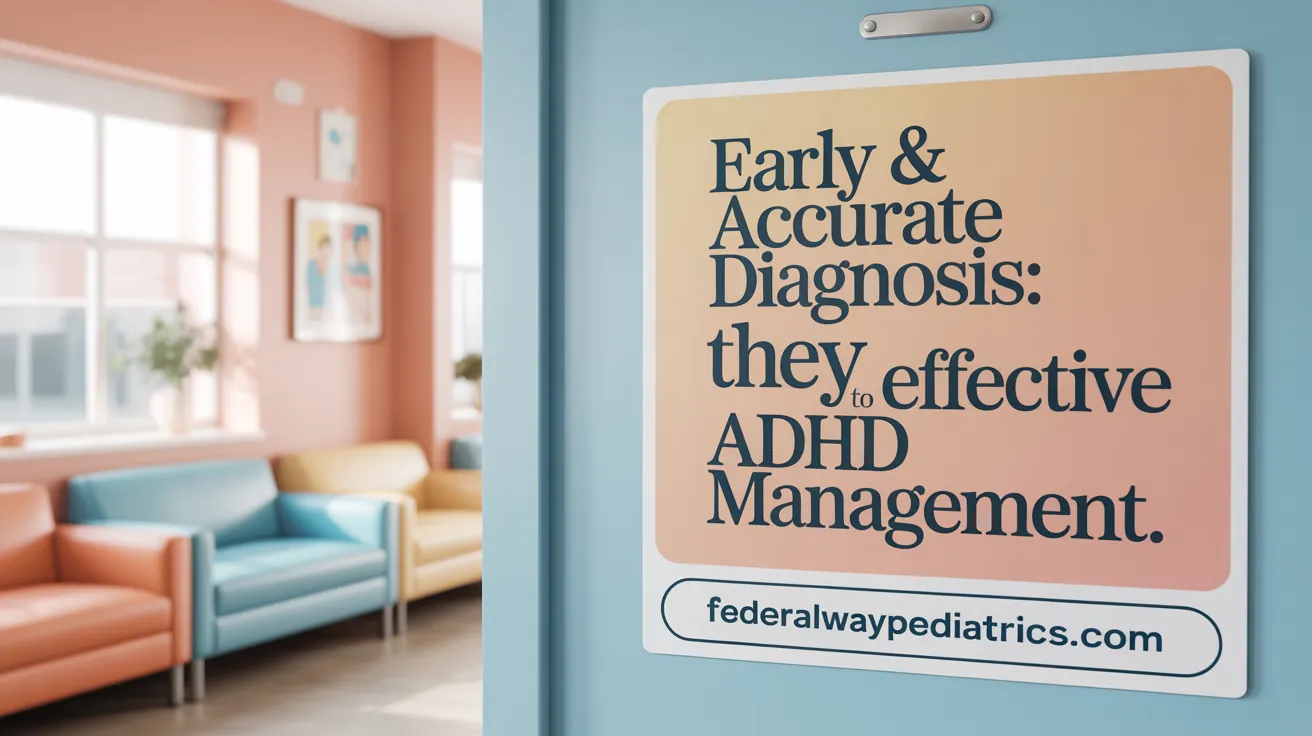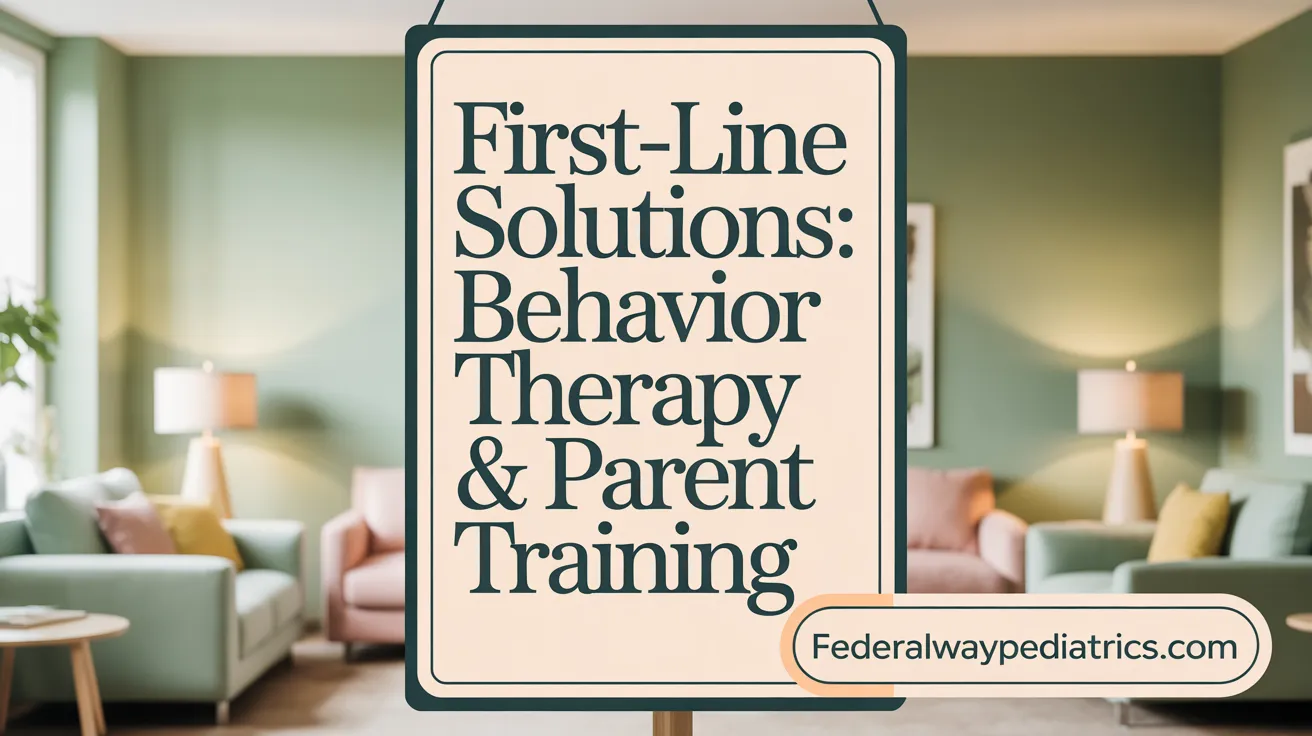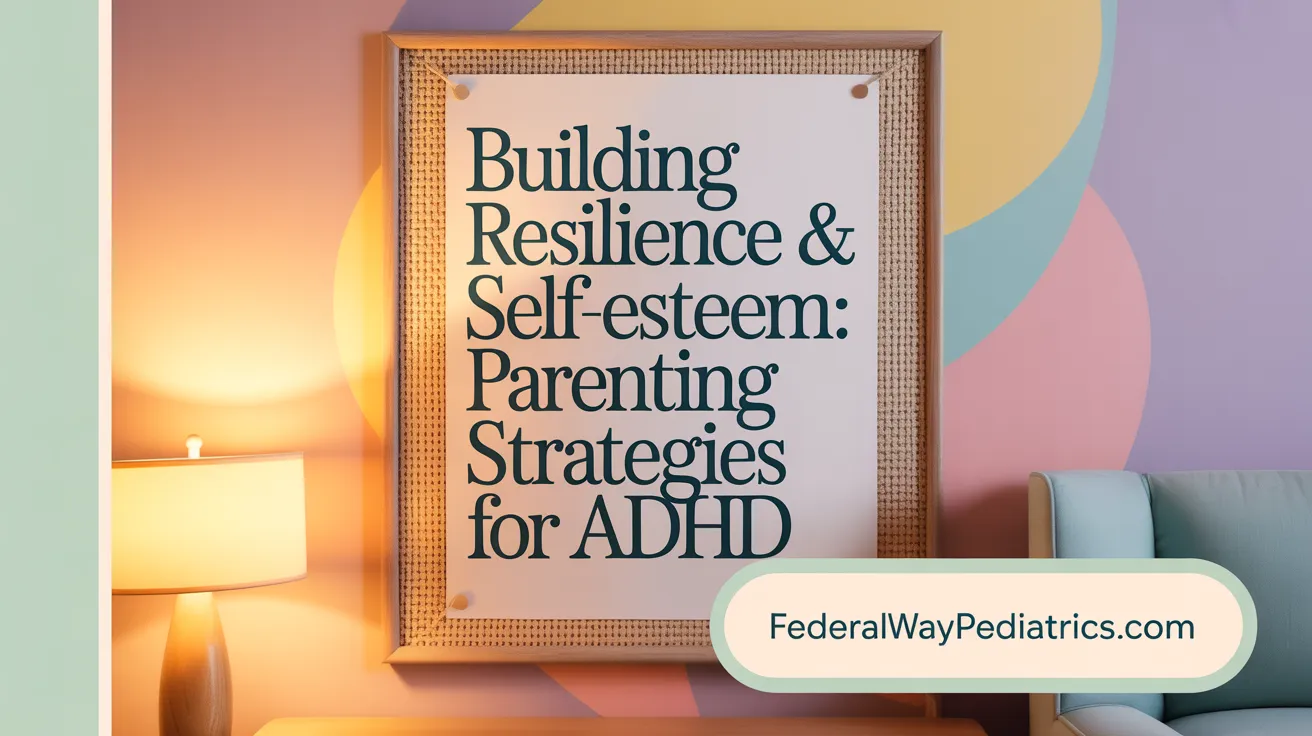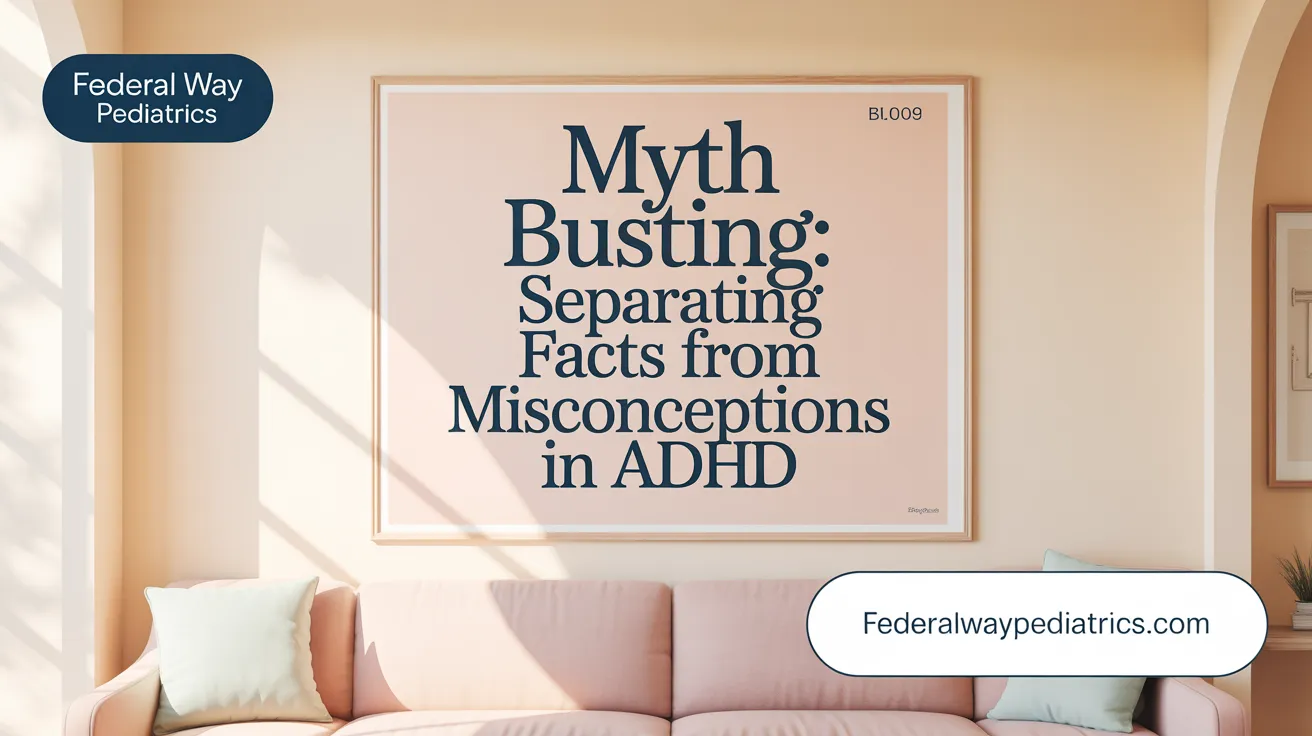Understanding ADHD and Its Impact on Children
What is ADHD?
Attention-Deficit/Hyperactivity Disorder (ADHD) is a common neurobehavioral disorder that affects millions of children worldwide. It is characterized by symptoms such as difficulty sustaining attention, hyperactivity, and impulsivity, which can interfere with everyday functioning.
How Common is ADHD?
Approximately 7-8% of children globally are diagnosed with ADHD, with higher rates observed among boys during childhood. While many children are diagnosed in early school years, symptoms often persist into adolescence and adulthood, sometimes altering in presentation.
Types and Diagnosis
ADHD is classified into three types:
- Inattentive
- Hyperactive/Impulsive
- Combined (the most common)
Diagnosis requires symptom presence before age 12 and impairment in two or more settings, such as home and school. A comprehensive evaluation involving medical, educational, and psychological assessments ensures accurate diagnosis.
Challenges for Children with ADHD
Children with ADHD often face difficulties that include:
- Low self-esteem
- Anxiety related to school performance
- Trouble maintaining relationships with peers
- Challenges in academic achievement
These challenges highlight the importance of early identification and tailored support to enhance the child's development and well-being.
Early and Accurate Diagnosis: The Foundation of Effective Management

Why is early detection and diagnosis important for ADHD?
Early identification of ADHD symptoms allows for timely interventions that can significantly improve a child's academic performance, social skills, and self-esteem. Detecting ADHD at a young age helps prevent potential complications such as school failure, anxiety, and strained relationships. Early diagnosis also supports families in understanding their child's behavior and accessing necessary resources and treatment.
How is ADHD diagnosed in children?
Diagnosis is based on criteria outlined in the DSM-5, requiring symptoms of inattention and/or hyperactivity-impulsivity present before age 12 and observable in two or more settings (such as home and school). The evaluation includes a comprehensive medical exam, review of personal and family medical history, interviews with caregivers and educators, and use of standardized ADHD rating scales to assess symptom severity and impact (Clinical Practice Guideline for the Diagnosis).
What challenges exist in diagnosing young children?
Diagnosing ADHD in preschool-aged children is more difficult due to overlapping developmental behaviors common at that age, such as high activity levels and impulsivity. Young children may also have difficulty expressing their experiences. Additionally, other conditions like language delays or mood disorders can mimic ADHD symptoms, necessitating careful and thorough evaluation by pediatric specialists (ADHD diagnosis process).
Why are observations in multiple settings and standardized tools critical?
Collecting information from various environments ensures symptoms are consistent and not situational responses. Standardized rating scales and behavioral assessments provide objective data to support diagnosis, helping differentiate ADHD from other disorders or temporary behavioral issues (Diagnosis of ADHD in children).
How are comorbid conditions addressed during evaluation?
Children with ADHD often have additional conditions such as anxiety, learning disabilities, or sleep disorders. Screening for these comorbidities is essential to develop a comprehensive treatment plan that addresses all contributing factors, improving overall outcomes for the child (Management of ADHD in Children.
Behavior Therapy and Parent Training: First-Line Treatment Especially for Young Children

Role of behavioral interventions in managing ADHD
Behavioral interventions are a cornerstone in managing Attention Deficit Hyperactivity Disorder (ADHD), especially in younger children. These therapies focus on modifying a child's behavior through positive reinforcement and structured routines rather than medication alone. They aim to reduce symptoms like impulsivity, hyperactivity, and inattention by teaching children and caregivers practical strategies to manage daily challenges and behavioral interventions for ADHD.
Parent training in behavior management and its effectiveness
Parent training in behavior management is a highly effective component of behavioral therapy. Parents learn techniques such as using consistent positive reinforcement, setting clear expectations, and applying non-physical discipline methods like timeouts. This training empowers parents to create supportive home environments that encourage desirable behaviors and improve family relationships. Additional resources on parent training in behavior management and behavioral parent training (BPT) provide further guidance.
Behavior therapy components including praise, routines, and positive discipline
Key elements of behavior therapy include praising positive behaviors promptly to reinforce them, establishing predictable routines for homework and chores to promote organization, and using positive discipline techniques that focus on teaching rather than punishing. These components help children with ADHD develop self-regulation and build self-esteem, essential for their social and academic success. See also behavior modification strategies for ADHD.
Benefits of early behavioral therapy for preschoolers
Early behavioral therapy, particularly for preschoolers under six years old, has multiple benefits. It is as effective as medication in managing symptoms but carries fewer risks and side effects. Early intervention can improve long-term outcomes by addressing problematic behaviors before they escalate, enhancing parent-child interactions, and setting a foundation for academic and social skills. Learn more about behavior therapy for young children with ADHD and treatment for children under 6 years.
Collaboration between parents and therapists
Successful behavior therapy requires close collaboration between parents and therapists. Therapists guide parents through skill-building and tailor strategies to the child's specific needs. This partnership provides consistent support across home and other environments, optimizing treatment effectiveness and helping children develop coping skills. For more on building this partnership, see parent training and behavioral therapy strategies and parent training and support resources.
Behavior therapy combined with parent training offers a safe, evidence-based approach that lays a strong foundation for managing ADHD symptoms, especially when started early.
Optimizing Medication Use in ADHD Management for School-Aged Children
Pharmacological treatment options for ADHD
For school-aged children with ADHD, pharmacological treatment commonly involves stimulant medications for ADHD and non-stimulant medications. Stimulants, including methylphenidate and amphetamine formulations, are the first-line treatment for children aged 6 years and older.
Use of stimulants as first-line medication for children 6 and older
Stimulants are effective in approximately 70-80% of children, improving core symptoms such as inattention, hyperactivity, and impulsivity. They are available in various forms such as immediate-release and extended-release to support individualized dosing schedules throughout the day (Common ADHD medications for children).
Non-stimulant alternatives and indications
Non-stimulant medications, including atomoxetine, guanfacine, and clonidine, provide alternatives when stimulants are ineffective, contraindicated, or cause intolerable side effects. These agents are valuable for children with comorbid conditions or concerns about stimulant misuse (Non-stimulant ADHD treatments.
Monitoring medication effects and side effects
Careful monitoring is essential during ADHD medication treatment. Clinical follow-up involves assessment of symptom improvement, side effects such as decreased appetite, sleep difficulties, mood changes, and potential impacts on growth and cardiovascular parameters. Dosages are adjusted for maximum benefit with minimal adverse effects (Monitoring ADHD medication effects.
Importance of combining medication with behavioral therapy
Combining pharmacotherapy with behavioral interventions enhances treatment effectiveness. Behavioral therapy supports positive behavior reinforcement and skill-building, complementing medication's symptom control (ADHD treatment options).
Collaboration in medication management
Successful ADHD management requires close communication among healthcare providers, parents, and schools. Collaborative effort ensures personalized treatment planning, consistent monitoring, and adjustment of medication regimens to meet each child's unique needs (Collaborative ADHD treatment approach.
School-Based Interventions and Educational Supports to Enhance Academic Success
What are the common academic challenges in children with ADHD?
Children with ADHD often face difficulties such as trouble completing assignments, organizing written work, retaining information during reading, and managing social interactions like interrupting peers or missing social cues. These challenges can significantly impact academic performance and social development. For more information on ADHD symptoms and management and Strategies for Supporting Children with ADHD, see these resources.
What classroom behavioral management strategies support children with ADHD?
Behavioral classroom management employs techniques like reward systems and daily report cards to encourage positive behavior and reduce negative actions. These strategies have been shown to increase academic engagement by promoting consistent behavioral expectations and reinforcing desirable conduct. Learn more about Behavioral Classroom Management Strategies and effective Behavioral classroom management.
How does organizational training help children with ADHD?
Organizational training teaches critical skills such as time management, planning, and material organization. This training reduces distractions and improves learning by helping children handle tasks methodically and develop routines for homework and chores. Additional insights on Organizational Training for ADHD can be found here.
What is the role and benefit of IEPs and 504 plans?
Individualized Education Programs (IEPs) and 504 Plans provide tailored educational services and accommodations. IEPs, governed by IDEA, offer specialized support, while 504 Plans ensure access to accommodations like extra test time, tailored instruction, positive reinforcement, assistive technology, and environmental modifications. Most children with ADHD benefit from these legal measures to promote academic success. See more on IEPs and 504 Plans for ADHD.
What legal frameworks support educational accommodations for ADHD?
The Individuals with Disabilities Education Act (IDEA) and Section 504 of the Rehabilitation Act provide the legal basis for educational accommodations and services. These frameworks ensure children with ADHD receive necessary support to overcome barriers in learning environments. Find detailed information about IDEA and Section 504 regulations.
How do parents, teachers, and healthcare providers collaborate?
Effective collaboration among parents, educators, and healthcare providers is crucial. Regular communication and shared strategies help develop and implement individualized plans, monitor progress, and adjust interventions. This teamwork supports consistent behavioral management and academic success for children with ADHD. Additional resources on Collaboration Among Parents, Teachers, and Healthcare Providers provide further guidance.
Creating Supportive Home Environments and Consistent Routines
Establishing structured routines for homework and chores
Creating a predictable daily schedule helps children with managing ADHD in children know what to expect and reduces anxiety around transitions. Setting specific times for homework and chores fosters responsibility and supports focus. Break tasks into smaller, manageable steps to encourage completion and prevent overwhelm.
Using clear, simple instructions and positive reinforcement
Give brief, clear directions supported by eye contact and visual cues. Asking the child to repeat instructions can improve understanding. Praise efforts and achievements frequently to build confidence and reinforce positive behaviors. These are effective behavior modification strategies for ADHD.
Managing distractions at home
Arrange a quiet, uncluttered workspace with minimal stimuli. Limit access to electronic devices during study time and use timers to structure breaks. Maintaining a calm environment helps children maintain attention and reduces hyperactivity. See managing ADHD in children for more information.
Encouraging social skills and peer relationships
Facilitate small group activities and use role-playing to practice appropriate social responses. Reward positive social interactions to motivate friendly behavior. Encouraging shared interests, like sports or arts, can help children build lasting friendships. Learn more about strategies for supporting children with ADHD.
Parenting strategies including involvement and positive discipline
Active parental involvement, understanding ADHD challenges, and collaborating with schools contribute to effective management. Discipline should focus on teaching rather than punishment, using consistent, logical consequences and positive reinforcement. Helpful parenting strategies for ADHD provide guidance on this topic.
Importance of regular, quality parent-child interactions
Setting aside one-on-one time daily strengthens the parent-child relationship, enhances self-esteem, and provides opportunities for guidance and support. Building a warm, patient, and understanding bond helps children develop resilience and confidence. Visit parenting a child with ADHD to explore further parenting support.
Psychosocial and Complementary Approaches to Support Child Development
Peer-Based Interventions to Improve Social Skills
Peer-based interventions involve strategies such as peer involvement and peer-mediated interactions to enhance social skills and relationships among children with ADHD. These approaches promote social integration and help children learn appropriate responses to social situations, improving peer acceptance and reducing social difficulties. For more on peer-based supports and behavioral interventions, see Non-pharmacologic management of ADHD and Diagnosis and Management of ADHD in Children.
Cognitive-Behavioral Therapy and Psychological Supports
Cognitive-behavioral therapy (CBT) is useful especially for adolescents with ADHD, focusing on managing symptoms, improving emotional regulation, and addressing maladaptive thought patterns. Psychological supports also include parenting skills training and talk therapy, which aim to strengthen coping strategies and family dynamics. More information can be found at ADHD treatment options and Strategies for Supporting Children with ADHD.
Emerging Digital Therapeutics and Neurofeedback
New digital therapeutics, including game-based platforms like EndeavorRx, are FDA-approved tools designed to improve attention and cognitive function in children with ADHD. Neurofeedback and biofeedback training are emerging therapies that encourage self-regulation of brain activity, although evidence for widespread efficacy remains limited and further research is ongoing. See Non-pharmacologic management of ADHD and ADHD overview, pharmacological and psychosocial treatments for more details.
Physical Activity and Integrative Medicine Approaches
Regular physical activity benefits cognitive function, attention, and overall health in children with ADHD. Integrative medicine practices such as meditation, yoga, Tai Chi, and mindfulness have shown moderate improvements in inattention and stress management, providing complementary tools to support symptom management. For references, consult Non-pharmacologic management of ADHD and Strategies for Supporting Children with ADHD.
Current Evidence for Dietary Supplements and Herbal Treatments
Dietary supplements like omega-3 fatty acids and vitamin D have some supportive evidence in reducing ADHD symptoms, though findings are mixed and not definitive. Herbal treatments including Ginkgo biloba and St. John’s Wort lack consistent benefits and may have potential side effects or interactions, making cautious use advisable. For further information, see Non-pharmacologic management of ADHD.
Role of Counseling and Mental Health Support for Families
Counseling services provide critical support to children and families affected by ADHD, helping with emotional challenges, relationship building, and coping skills development. Family therapy and individual counseling offer safe spaces for addressing stress, promoting resilience, and enhancing overall well-being, thereby complementing medical and educational interventions. Explore options at Counseling services in Federal Way WA and Parenting a Child With ADHD.
Parenting Strategies to Foster Resilience and Self-Esteem in Children with ADHD

Understanding ADHD behaviors vs misbehavior
Children with ADHD often display inattentive, hyperactive, and impulsive behaviors that can be mistaken for misbehavior. Recognizing these are symptoms of a neurodevelopmental disorder helps reduce parental stress and fosters empathy. This understanding is foundational to effective parenting. Learn more about parenting a child with ADHD.
Providing unconditional love and positive reinforcement
Consistent positive reinforcement and unconditional love are crucial. Praising efforts and successes, no matter how small, helps build self-esteem and encourages positive behavior. Maintaining a warm, supportive home environment reinforces a child's resilience. Explore positive reinforcement techniques and building self-esteem in children with ADHD.
Setting clear expectations and consistent discipline
Clear, simple instructions combined with consistent, purposeful discipline help children understand boundaries. Positive behavior systems using rewards alongside logical consequences improve compliance and reduce frustration for both child and parent. For detailed strategies, see behavioral interventions for ADHD and effective discipline systems.
Supporting social skills and strengths development
Encouraging social interaction through small group activities and teaching appropriate responses to provocation aids social skills. Recognizing and building on a child's strengths—such as artistic, athletic, or mechanical talents—boosts confidence and peer relationships. More on supporting social skills in children with ADHD and strength-based approaches.
Engagement in support groups and educational advocacy
Parents benefit from joining support groups like CHADD, which provide education, resources, and emotional support. Understanding legal rights under IDEA and Section 504 empowers parents to advocate for effective school accommodations. Learn about educational rights and advocacy and IEP and 504 plans for ADHD.
Addressing parental ADHD and stress management
Since ADHD often runs in families, parents should consider evaluation and support if needed. Accessing professional counseling or therapy helps manage stress, improving family dynamics and parenting effectiveness. Explore options for counseling services in Federal Way WA and stress management for children with ADHD.
By adopting these strategies, parents can create a nurturing environment that promotes their child's emotional growth, academic success, and lifelong resilience. For comprehensive guidance on managing ADHD in children and effective ADHD parenting approaches, consider reviewing these resources.
Monitoring and Ongoing Collaboration for Long-Term ADHD Management
Why Is Regular Follow-Up Important in Managing ADHD?
Effective long-term management of ADHD requires consistent monitoring of symptoms to evaluate treatment progress and identify any emerging side effects. Regular follow-up visits, typically every 3 to 6 months once symptoms stabilize, allow healthcare providers to track changes in attention, hyperactivity, and impulsivity. This continuous assessment helps ensure that interventions remain effective and tolerable for each child. For detailed understanding, see the Clinical Practice Guideline for the Diagnosis and Management of ADHD.
How Are Treatment Plans Adjusted Over Time?
Treatment for ADHD is not static. Plans are frequently adjusted based on the child’s response and any adverse effects. For example, medication dosages may be modified to optimize symptom control while minimizing side effects such as appetite loss or sleep disturbances. Behavioral therapies are tailored to evolving needs, with changes made in consultation with families and educators. This dynamic approach supports sustained improvement and quality of life. Learn more about monitoring and adjusting ADHD treatment.
What Role Does Coordination Among Providers, Schools, and Families Play?
Collaboration is essential among all parties involved in a child's care. Healthcare providers, schools, and families share information and coordinate strategies to maintain consistency across environments. This includes adapting Individualized Education Programs (IEPs or 504 plans, communicating about behavioral interventions, and sharing updates on medication effects. Open channels of communication empower families to advocate effectively and support their child's success. For further guidance, see Collaboration Among Parents, Teachers, and Healthcare Providers.
Why Is Screening for Comorbidities Necessary?
Children with ADHD often experience additional conditions such as anxiety, learning disabilities, or sleep disorders. Regular screening during follow-up appointments enables early identification and integrated management of these conditions. Addressing comorbidities can notably enhance overall functioning and prevent complications that might otherwise hinder treatment efficacy. For detailed information, review the ADHD and comorbid conditions.
How Does Management Evolve Through Developmental Transitions?
As children mature into adolescence and adulthood, their needs and the presentation of symptoms may change. Proactive planning and adjustment of treatment strategies are vital, including addressing emerging social or academic challenges. Emphasizing adolescent assent and preparing for transitions to adult care ensures continuity and supports long-term well-being. Explore more about ADHD management in adolescents and adults and ADHD Management During Developmental Transitions.
What Is the Medical Home Model and Its Importance in ADHD Care?
The medical home model advocates for a comprehensive, family-centered, and continuous care approach. It involves a primary healthcare provider who coordinates all aspects of the child’s care, including referrals, follow-ups, and communication with schools and therapists. This model promotes cohesive care delivery, helping families navigate complex treatment landscapes and improving outcomes. See Program to Enhance Attention Regulation and Learning (PEARL) for integrated care examples.
In summary, sustained success in managing ADHD hinges on regular monitoring, adaptive treatment plans, active collaboration among caregivers and professionals, vigilant screening for co-occurring disorders, attention to developmental needs, and an integrated medical home care framework. For comprehensive strategies and support, visit CHADD - Parenting a Child with ADHD.
Dispelling Myths and Encouraging Evidence-Based Practices in ADHD Care

Clarifying Causes of ADHD and Hereditary Factors
ADHD is a neurodevelopmental disorder with strong hereditary links; studies suggest that around 74% of cases are inherited. It is not caused by poor parenting or environmental factors alone but involves complex brain functions and neurotransmitter imbalances. For more detailed information, see Clinical Practice Guideline for ADHD and Parenting a Child with ADHD.
Limitations and Risks of Unproven Alternative Treatments
Alternative approaches such as special diets, vitamin supplements, herbal remedies like Ginkgo biloba, and neurofeedback therapies lack definitive scientific backing. These methods may carry risks, including potential drug interactions, and should be considered cautiously under medical guidance. Refer to studies on Non-pharmacologic management of ADHD for evidence-based insights.
Understanding Medication Safety and Misconceptions About Addiction
Stimulant medications, often first-line treatments, are shown to be safe when used as directed. They do not cause addiction in children and do not increase risks for later substance abuse. However, regular monitoring is essential to manage side effects such as appetite changes or sleep disturbances. Detailed discussion of medications is available at Determining ADHD Medication Treatments and ADHD treatment options.
Importance of Scientific Evidence in Selecting Treatments
Effective ADHD management combines pharmacological treatment—mainly stimulants and non-stimulants—with behavioral therapies. Decisions should be based on robust clinical evidence, complemented by ongoing assessment and collaboration among healthcare providers, educators, and families. For comprehensive treatment strategies, see ADHD treatment options and Behavioral therapies for ADHD.
Promoting Informed Decisions by Families and Professionals
Families are encouraged to consult healthcare professionals to understand ADHD's complexities and treatment options. Advocacy, education, and involvement in treatment planning can empower caregivers to make informed, individualized decisions that support children's long-term well-being and development. Useful resources include Parenting a Child With ADHD and CHADD Overview for Parents.
Building Successful Futures for Children with ADHD
Integrated Approaches for Managing ADHD
Effective management of ADHD in children involves a combination of tailored behavioral therapies, medication when appropriate, and educational accommodations. Early diagnosis enables the development of individualized treatment plans that best address each child's unique challenges. Behavior therapy, including parent training and classroom interventions, works hand in hand with medication for children aged six and older to optimize outcomes.
Importance of Early, Tailored Interventions
Early intervention is crucial to prevent academic struggles, low self-esteem, and social difficulties. Interventions must be age-appropriate; for young children under six, behavior therapy is the first-line treatment, while older children often benefit most from a combined approach including medication. Establishing structured routines and reinforcing positive behaviors at home and school lay foundations for successful adjustment.
Multidisciplinary Collaboration Enhances Care
Successful ADHD management depends on strong collaboration among parents, educators, healthcare providers, and therapists. Parents are encouraged to advocate for their children's educational rights through plans like IEPs or 504 accommodations. Regular communication between home and school promotes consistency and supports social and academic success.
Encouragement and Hope for Families
While ADHD presents challenges, many children thrive with appropriate support, developing strengths in various areas. Families are encouraged to seek support networks, engage in counseling if needed, and maintain positive, nurturing relationships that foster resilience and confidence.
Continuous Adaptation and Support
ADHD symptoms and needs may evolve over time, requiring ongoing monitoring and adjustment of treatment strategies. A comprehensive, flexible, and sustained approach ensures children with ADHD receive the support essential to achieving their full potential and building successful futures.
